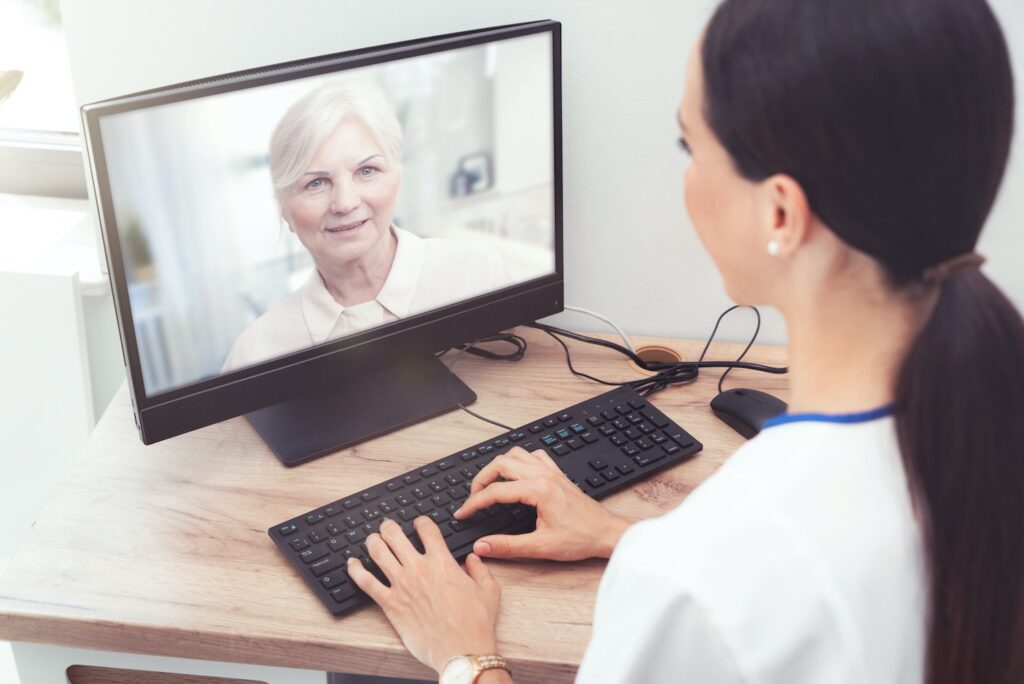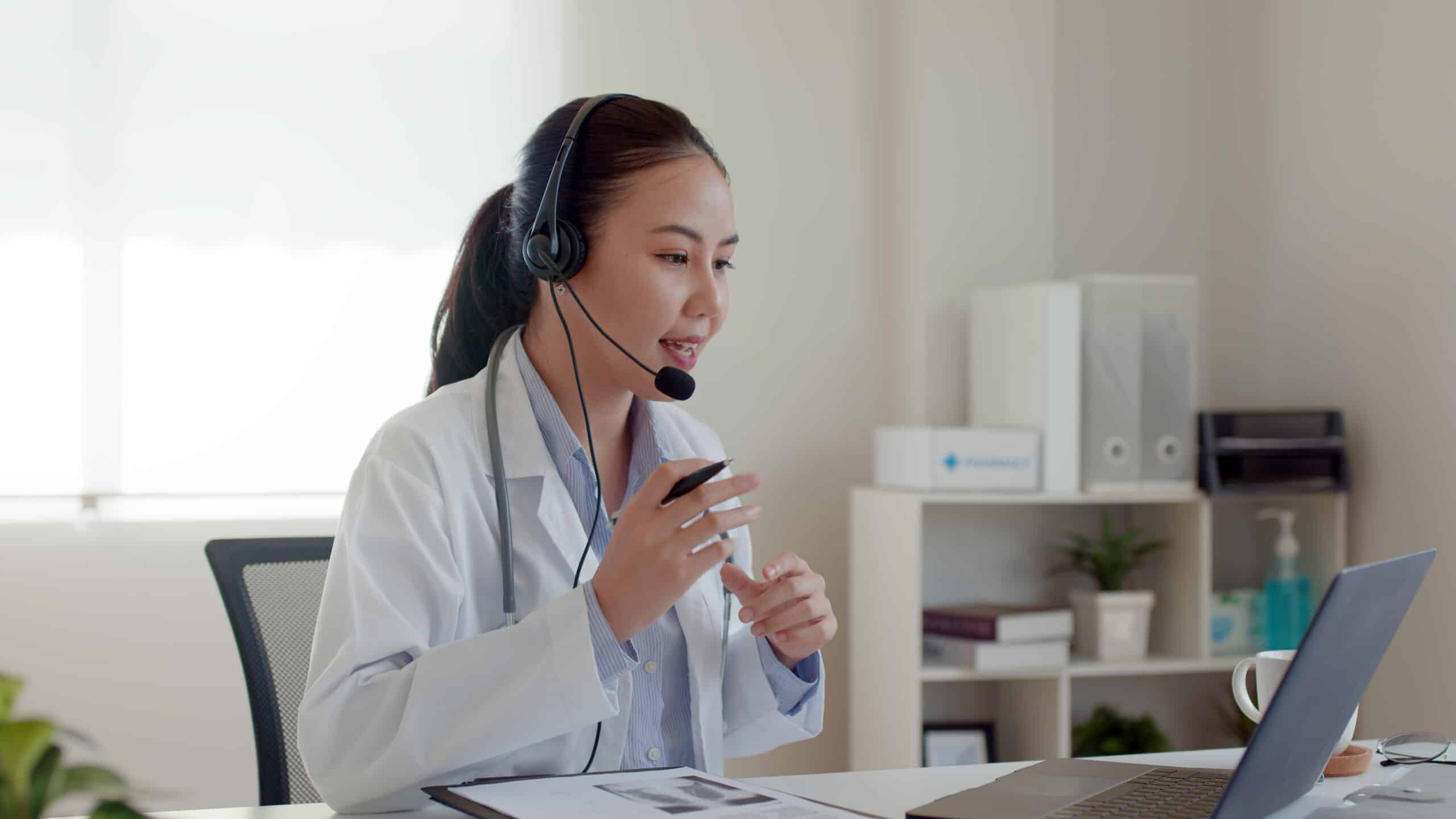Significance of Telehealth in the Modern Healthcare Landscape
Telehealth has emerged as a transformative force in the modern healthcare landscape, revolutionizing how we access and receive medical services.
With its fusion of technology and healthcare, telehealth has transcended geographical boundaries, ensuring patients can connect with healthcare providers remotely.
Its impact extends beyond convenience and presents a dynamic shift in healthcare delivery, making quality medical care more accessible, efficient, and patient-centric.
Current State of Telehealth
Telehealth has rapidly gained momentum and acceptance in recent years. Health systems and providers have adopted telehealth services to varying degrees, allowing patients to access care remotely.
The current state of telehealth shows an ecosystem of virtual consultations, remote monitoring, and even telehealth apps that connect patients with healthcare professionals. However, the level of adoption varies across different regions and medical specialties.
The Impact of Telehealth
The impact of telehealth extends far beyond convenience. It has had a profound influence on various aspects of healthcare:
- Improved Access to Care: Telehealth breaks down geographic barriers, ensuring that patients in remote rural areas or those with mobility issues can access the care they need. It reduces the need for long and often arduous travel, saving both time and resources.
- Enhanced Efficiency: Telehealth reduces waiting times and increases the speed of diagnosis and treatment. It streamlines healthcare operations, leading to quicker responses and a more efficient use of resources.
- Cost Savings: Patients often find that telehealth is a more cost-effective option, eliminating expenses related to travel and in-person appointments. It also reduces overhead costs for healthcare providers, potentially lowering the overall cost of healthcare.
- Quality Care Continuity: Telehealth enables continuous monitoring of patients, ensuring a more holistic approach to healthcare, which has proven especially valuable in managing chronic conditions and post-surgery follow-ups.
Key Drivers of Telehealth Growth
Several key factors are attributed to the growth of telehealth:
- Advancements in Technology: Continual technological innovations, including improved internet connectivity, mobile devices, and medical software, have paved the way for telehealth’s expansion.
- Shift in Healthcare Delivery Model: The recognition that healthcare delivery can be more patient-centric and accessible has encouraged the adoption of telehealth.
- Government Support and Policy Changes: Government initiatives, including changes in reimbursement policies and regulatory barriers, have spurred the growth of telehealth.
- Consumer Demand: Patients have increasingly sought more convenient and accessible healthcare options, further driving the adoption of telehealth.
- Provider Acceptance: Healthcare providers have embraced telehealth to expand their reach, improve patient outcomes, and streamline operations.
Predictions for the Next Decade
As technology continues to evolve and the world has changed, the next decade holds exciting opportunities when it comes to healthcare improvements that are both innovative and cost-effective.
Expansion of Telehealth Services
Specialized Medical Fields
For now, telehealth is still a very generalized system, connecting patients with family doctors and providing a broad array of services. However, as telehealth software advances, everyone from family doctors to specialized medical fields will continue to evolve how they use it.
Mental Health Services
Telehealth will continue to play an increasingly vital role in mental health, offering convenient access to therapists and counselors, making access more convenient for those seeking mental health support.
With mental health providers in such high demand, telehealth also allows practices to provide timely care to those in need”
Chronic Disease Management
Telehealth will significantly improve the management of chronic diseases through remote monitoring, medication management, and lifestyle coaching. A consistent and continuous approach to monitoring and treatment will reduce stress and ease managing a chronic condition.
Technological Advancements
Artificial Intelligence and Machine Learning Integration
Artificial Intelligence (AI) and machine learning will be integrated into telehealth systems, aiding diagnosis, patient management, and personalized treatment plans.
AI systems can analyze data and access a vast array of resources in seconds, which will be a useful tool for doctors integrating technology into their workflows.
Wearable Health Devices
Wearable health devices will become more sophisticated and integrated with telehealth platforms, allowing continuous health tracking. Smartwatches and other wristbands can sync with telehealth apps for real-time data collection and analysis.
Enhanced Patient Experience
Personalized Care
Telehealth will enable healthcare providers to offer personalized care based on individual patient data, leading to more effective treatments.
A platform allowing information on patients to be stored and pulled up during a telehealth call will let any medical professional access their patient’s history and information quickly and efficiently.
Telemedicine can also extend to 24/7 care, aiding patients at times when there is no physical location open to visit.
Virtual Reality in Telehealth
Virtual reality (VR) will be harnessed for virtual visits, especially in mental health and physical therapy, offering immersive and engaging patient experiences.
This type of experience can manifest with more accurate and real-time feedback transmitted to the doctor or even help patients with exercises to regain mobility. VR is an emerging player at the forefront of technology, and it will be adapted to suit telemedicine.
Improved User Interface
Telehealth platforms will become more visually appealing and user-friendly, making them accessible to people of all ages and tech proficiencies.
As telehealth platforms become more widely used, leading to more patient and doctor feedback, the interfaces and software will be improved to be easily operated.
Maintaining the Human Touch
While telehealth offers numerous benefits, it must not compromise the essential human element of healthcare. Ensuring that empathy and compassion are integral to telehealth interactions is crucial.
Balancing Technology and Compassion
Finding the right balance between utilizing technology and maintaining the empathetic connection between healthcare providers and patients is essential.
Preserving the Doctor-Patient Relationship
Forming a lasting rapport with one’s doctor is important, and when executing telehealth correctly, this doctor-patient relationship can grow even when formed virtually.
Telehealth visits can allow the doctor and patient to interact in meaningful ways that build their bond just the same as any office visit might.
Encouraging a Proactive Approach to Embrace Telehealth Trends
To fully embrace telehealth’s potential, proactive measures are essential:
- Education and Awareness: Promoting awareness and educating both healthcare providers and patients about the benefits and capabilities of telehealth is essential
- Investment in Technology: Healthcare organizations must adopt the latest technology to facilitate the seamless integration of telehealth services
- User-Friendly Platforms: Telehealth platforms should prioritize user experience and design, making them easy and intuitive
- Continuous Training: Healthcare providers should receive ongoing training to ensure they can maximize the benefits of telehealth while preserving the quality of care
The future of telehealth holds great promise, with the potential to revolutionize the healthcare industry. By addressing challenges, embracing technological advancements, and focusing on compassionate care, telehealth can continue to improve access, efficiency, and the overall patient experience.
The ongoing evolution of telehealth will undoubtedly shape how patients receive healthcare services in the future, offering a brighter and more accessible future for both patients and healthcare providers.
Updox Telehealth Software
Updox Telehealth enables healthcare providers to offer remote medical consultations to patients. It facilitates secure video, audio, and chat-based communication between doctors and patients, ensuring HIPAA-compliant confidentiality.
Updox streamlines scheduling, payment processing, and patient record management, enhancing the healthcare experience. It can be accessed via web browsers and mobile devices, making it convenient for both practitioners and patients.
Schedule an Updox demo today!





